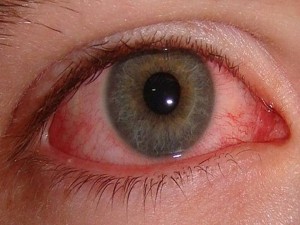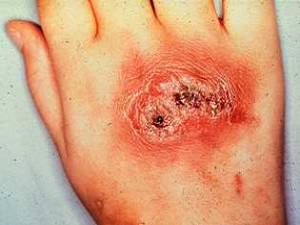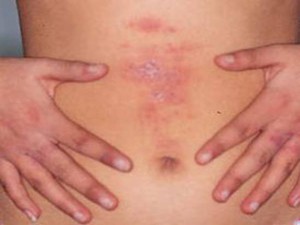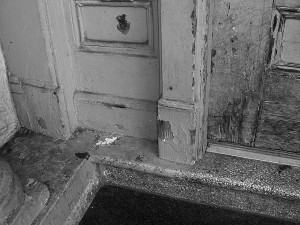There are serious health issues associated with mold exposure and an infestation should not be ignored. Even if you can’t see the mold, it can be hiding in insulation and behind the drywall. Outdoor mold spores can blow into your home or a previous mold issue can have left behind spores, increasing potential for new growth.
Allergic reaction to mold is not unique to mold exposure and can be misdiagnosed with out environmental testing to help rule it out as a potential cause to allergy problems.
The elderly, infants, young children, and persons with weakened immune systems are more at risk to develop health issues when exposed to mold. Some of the illnesses that are caused by mold include: allergies, asthma, sinus infections, fertility problems, and chronic fatigue. It is a good idea to have your building tested if you or others have experienced any of these issues over an extended period of time. Climates with high humidity like that around Columbia are a breeding ground for Mold. At risk populations include infants, elderly, small children, or anyone with a weakened immune system. Illnesses caused by or made worse by mold can range from severe as cancer to mild as a stuffy nose or headache.




1. Breathing in the spores. If there are mold spores in your home, there are mold spores in the air you breathe.
2. Food contamination. Airborne mold spores can contaminate food.
3. Direct contact. Coming in direct contact with mold is very dangerous.
Reaction to mold normally starts out minor, a headache that won’t go away or stuffy nose. Then as the mold grows, your reaction can quickly become severe. Digesting mold spores in food can lead to symptoms consistent with food poisoning: vomiting, diarrhea, and upset stomach.
If you think you may be exposed to mold and the symptoms it causes, Contact Us using the multiple options available for your Lab Certified Detailed Analysis today and visit a physician.

Indoor Allergens are the unseen cause of many allergy symptoms.

Lead Paint Pealing off of a door and wall, exposing toxins.

A bedbug full after a large meal of blood on human skin.
Mold Air Quality Test your facility, which will include a laboratory certified detailed report, within a few business days. Please contact our office directly for a quote.
The irritants that are found in our homes can make their way into our cars, trucks, boats, and RVs. Mold can grow in the dark and damp places of your vehicle.
If you are suffering from persistent allergy symptoms, having your vehicle or vehicles tested is the best way to determine the culprit.
Feeling under the weather lately?
Have you been experiencing symptoms such as headaches, congestion, runny nose, itchy eyes, skin rashes, lingering cough?
Maybe you are allergic to particles in your home or work environment. These particles are called allergens. Allergens are any substance that when inhaled, swallowed or touched can trigger an allergic reaction. Your body becomes tricked into believing that this substance is harmful, causing your immune system to overreact. Health experts estimate that 35 million Americans suffer from upper respiratory tract symptoms caused by allergic reactions to airborne allergens.
The most common types of allergens responsible for causing allergies include: mold, dust, mites, pollen, animal dander and insects (cockroaches), among many others.
Contact us and schedule your Allergens testing for individual items or ask us about our Combo kit which includes: cat and dog dander, dust mites and cockroaches. Educate yourself on what you are breathing, so you can have a healthier and more enjoyable life.
Asbestos was often used in many construction materials for its fiber strength and heat resistance before the hazards were understood. While the EPA regulations do prohibit its use in ways that can be hazardous to humans and our environment, this was not accomplished until the mid 1970s. Any construction before and around that time are at risk of containing asbestos and asbestos compounds. Specific products asbestos was or is commonly used as an ingredient include: roofing, ceiling tiles, wall boards, plaster, floor tiles, paper products, cement products, heat resistant fabrics, packaging, gaskets, and coatings. Many buildings in Columbia predate the EPA bans and are at risk of containing asbestos.
Where asbestos may be found:.
In Columbia, like many other populated areas, lead can be found virtually anywhere. In the water, soil, air, and buildings. Human activities have caused the dispersal of concentrated lead throughout our environment, especially the combustion of leaded gasoline and from other industrial processes. Furthermore, lead has been used in many products over the course of time and could be found in your home: paint, wall boards, plasters, ceramics, pipes, plumbing material, solders, gasoline, batteries, ammunition, and cosmetics.
Such wide spread use of lead in the past has caused a lot of emission of Lead into the environment over time and still currently. Natural levels of lead in the soil range between 50 and 400 parts per million. However, mining, smelting, and refining sites result in massive increases in lead levels in the surrounding environment. When lead is released into the atmosphere, it can travel great distances before settling. Once it settles, it can stick to soil particles and form there move into ground water supply.
vOnce the dangers of lead were understood, regulations at the Federal and State level have reduced or eliminated the amount of lead in water, soil, consumer products, food, and occupational settings.Drinking water quality testing is the only means of determining how safe the water is that gets pumped into our homes. We no longer have to take the word of water treatment plant authorities when they say that all the water we use is safe. Whether you have a well or use town water, water quality testing can benefit you!
We test both commercial and industrial facilities!
FHA/VA Approved
Chemical, Bacteria, and Lead
New York Times Article on Mold